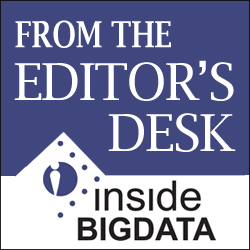In this contributed article, Eric D. Schabell, Global Technology Evangelist and Portfolio Architect Director at Red Hat, discusses how microservices are core to organizations’ flexibility and agility in the digital world. But that doesn’t mean that microservices are right for every use case or even for every organization—at least, not right now.
Reality Bites: 3 Misconceptions that Can Lead to Microservice Mayhem
Businesses Building AI Applications Are Shifting to Open Infrastructure
In this special guest feature, Ami Badani, CMO of Cumulus Networks, suggests that as AI requires a lot of data to train algorithms in addition to immense compute power and storage to process larger workloads when running these applications, IT leaders are fed up with forced, expensive and inefficient infrastructure, and as a result they are turning to open infrastructure to enable this adoption, ultimately transforming their data centers.
Dotscience Enables Simplest Method for Building, Deploying and Monitoring ML Models in Production on Kubernetes Clusters to Accelerate the Delivery of Business Value from AI
Dotscience, a pioneer in DevOps for Machine Learning (MLOps), announced new platform advancements that offer the easiest way to deploy and monitor ML models on Kubernetes clusters, making Kubernetes simple and accessible to data scientists.
Interview: Haoyuan Li, Founder and CTO of Alluxio
I recently caught up with Haoyuan Li, Founder and CTO of Alluxio to examine the next critical piece in the data evolution: Data Orchestration – the missing piece in building hybrid and multi-cloud analytical architectures. Haoyuan Li received his Ph.D. from UC Berkeley AMPLab, in Computer Science. At the AMPLab, he created Alluxio (formerly Tachyon) Open Source Data Orchestration System, co-created Apache Spark Streaming, and became an Apache Spark founding committer.
Benefits to Consider from a Multi-Cloud Approach
In this contributed article, Bill Fenick, Vice President, Enterprise for Interxion, believes that the cloud is undoubtedly the future within business – and we’re already seeing it evolve. Businesses that adapt to the evolving cloud and adopt a multi-cloud strategy will gain an edge over their competition, while those that don’t will find themselves left behind.
Three Keys to Choosing a Data Center in the Age of AI
In this special guest feature, Steve Conner, Vice President of Solutions Engineering at Vantage Data Centers, discusses how AI is currently rewriting the rules of future computing. As AI becomes increasingly advanced, data centers must be able to adapt and scale to fit the needs of its clients.
The Birth of Modern Technology – 50 Years Ago to Now a Look at How Far We’ve Come
Happy 50th birthday Internet! In this article we discuss a bit of history and a bit of nostalgia in reflecting on what this technology has meant to the world. As developments in areas such as artificial intelligence (AI), big data and the Internet of Things (IoT) converge, we find ourselves at the beginning of a new era of innovation. We also have a number of commentaries from members of the tech ecosystem.
Accelerating IT Innovation with Software-Defined HPC Solutions
As businesses realize traditional IT will be unable to support future business goals, they are leveraging software-defined technologies to eliminate data center complexity, reduce expenses, and accelerate IT innovation. HPE’s Bill Mannel explores how software-defined HPC solutions can work to push your business forward.
Instaclustr Launches Managed Open Source-as-a-Service Platform
Instaclustr, offering scalable open source technologies delivered as completely managed solutions, announced the launch of its Open Source-as-a-Service platform. This comprehensive platform offers customers across industries – and from startups to the enterprise – fully hosted and securely managed Apache Cassandra, Apache Spark, Elasticsearch, Kibana, Lucene, and Zeppelin
Five Questions to Embrace Diversity in Your Data Architecture
In this special guest feature, Jonathan Natkins, Field Engineering Director at StreamSets discusses why companies need to embrace diversity in data architecture and shares five questions to determine which architecture best fits a particular application.













